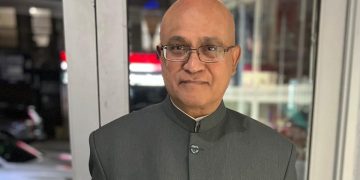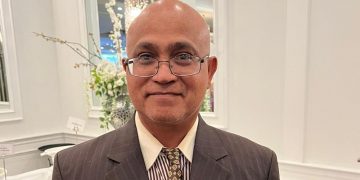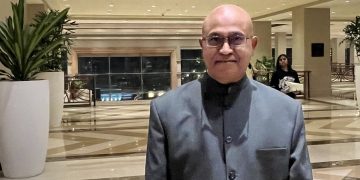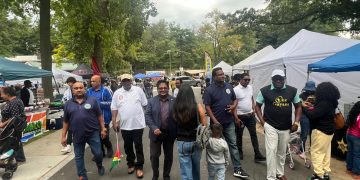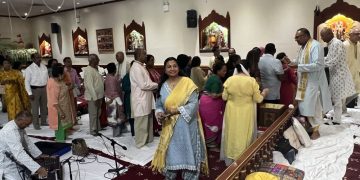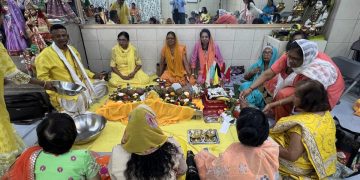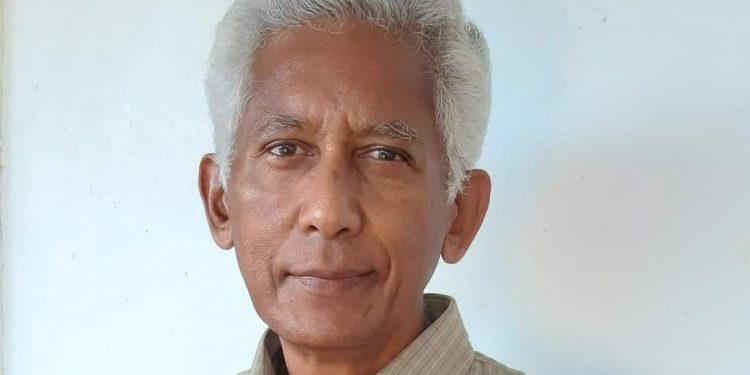Dear Editor,
While paying tribute to any known Guyanese personality who contributed to the welfare of the country, the person’s attributes will unfold a distribution of their pros and cons. Guyana is well poised at a fast track development stage during this 53rd year of Republic celebration, and, Guyana and the world at large will not forget Linden Forbes Samson Burnham, indeed a scholar, who as a lawyer and leader, used his knowledge for many right and wrong reasons but became a “waste of education.” His brilliance steered him down to the road to march with the likes of Idi Amin.
Those very talents pushed him down the drain in the direction of dictatorship. He himself governed Guyana with the vice of an iron fist between 1968 and 1985. His intelligence misguided him to shake hands and befriended murderers like Jim Jones and Rabbi Washington. Jim Jones was responsible for the death of 918 individuals at Jonestown, Essequibo on 18th November’1978. It was reported that millions of dollars in cash and jewelry were removed from Jonestown by visitors sent by Burnham.
Rabbi Washington led the House of Israel whose members allegedly murdered Father Bernard Darke of the Catholic Standard news outlet in 1979. This incident occurred after a fire (arson) destroyed the PNC Government building where sensitive information was stored regarding the activities of Jonestown. In June’1980, Dr. Walter Rodney was assassinated and a COI (Commission of Inquiry) report stated that the Burnham government was included in the conspiracy.
Burnham was known as the best orator in the Caribbean. Ironically, on 6th August’1985, he died, after being treated for a throat infection! He used his voice to persuade innocent Guyanese to commit many atrocious and barbaric acts. On 12th February’1962, in his speech he said, “Comrades the fight starts now.” His influence ignited his followers to create mayhem and what followed became known as the infamous Black Friday riot on 16th February’1962 when Georgetown burned with millions of dollars lost, 56 businesses destroyed, 87 damaged, 66 looted and dozens of people were injured. Burnham did not quell his supporters who went on a violent rampage on 26th May’1963 when hundreds were murdered and injured and thousands were displaced as a result of the Wismar Massacre.
Burnham failed in 3 successive elections (1957, 1961 and 1964 to win more Parliamentary seats than Jagan. However through the machination of the western powers, Burnham was allowed through a coalition with the UF, to form the 1964 government that would lead the country into independence in 1966. From then onwards Burnham forcefully remained as the Head of State for the next 21 years through rigging successive elections in 1968, 1973, 1980 as well as the referendum of 1978.
Burnham‘s vision was tempered with lack of support from the majority of Guyanese people who rebelled at his leadership style. While he had some good ideas and initiated 2 separate development plans, in addition to his “feed, clothe and house” project for the nation, all his good intensions collapsed when set in motion.
To empower his supporters, he pushed forth the concept of cooperatives which he envisaged would become the dominant sector in the economy even replacing the private sector. From Guystac to Guybank to Coop Bank to Coop Societies, all those movements collapsed. Sociologist Dr. Tara Singh analyzed, “The key factor for failure of the cooperatives was the lack of attitudinal changes. There can never be effective institutional transformation without accompanying attitudinal transformation. The two must exist in a symbiotic relationship.”
Although Mr. Burnham must be credited with building the Demerara Harbor Bridge, the Soesdyke-Linden Highway, starting phase I of the MMA Rice Development Scheme, building the University of Guyana, and a few housing schemes for his supporters at South Ruimveldt Gardens, Melanie Damishana, West Ruimveldt etc., time caught up with him. His dream for busting open the interior and harnessing hydro power collapsed, as the Upper Mazaruni Road Project that was the conduit was aborted because of lack of funding.
Burnham’s legacy include black-out and too many lines in a “non-aligned” country, as, poverty, despair, and corruption struck the heart of the country, with unemployment rising with the cost of living, banning of essential food items, scarcity of foreign currency, while extolling the paramountcy of the PNC Party that drove fear into those who were not PNC card-holders, the weaponising of the military forces, the establishment of ETB (External Trade Bureau) and KSI (Knowledge Sharing Institute) for the convenience of control purposes and other draconian systems. His secret service drove terror into the nation as thousands flee the country to seek safer and better lives. The biggest migration outflow was from 1970 to 1990 when Guyana lost most of its qualified manpower from all ethnicities.
One memorable image was when he dressed in a military-style uniform, riding a horse, smoking his cigar with a whip in his hand and workers bowing to him as he rode, aloof and lost in a Machiavellian dogma. Hope Estate enacted such a despicable scene. His sister, Jessie, warned, “Beware my brother Forbes!” Burnham fell from his high seat as the ground crumbled around him. He nationalized bauxite, sugar, Bookers, Jessel Group, Sprostons and others in 1975-76 after receiving critical support from the PPP.
As he began to take full control of the economy, the PNC Government had owned 80% of the economy and only his chosen ones without the requisite qualifications were allowed to head these industries. The country began a downward trend. He refused to grant sugar workers their profit sharing for 1975-6. That led to a 135 days strike in 1977 when the PNC aligned MPCA was given help from the US through AFCIO. The strike ended in January 1978 but the workers received nothing and many of their positions were filled by the hired scabs.
As per Dr. Ramesh Gampat, the “Great Downswing” that began the year of the 135 days strike (1977) and which lasted until 1980 recorded an average annual GDP growth of -2.67% for this period. The GDP growth in 1982 was a startling -13.19%. Desmond Hoyte was Burnham’s successor and he followed Burnham’s legacy by rigging the 1985 election. He was confronted with a Burnham-generated nose dive in the economy and was forced to seek the IMF intervention in 1989 which led to an Economic Recovery Program (ERP). Among the measures were the laying off of 6,000 government workers and the divesting of state enterprises. Free market reforms replaced the “command and control” economy. Hoyte’s ERP began to work and between 1989 and 2000 the annual growth rate was reversed (5.4%).
In 1992 when the PPP regain political power of the state (due to President Carter’s intervention), they had to service a massive debt: for every dollar earned, 92 cents had to repay debts incurred by the PNC squanderers. Despite this monumental problem, the PPP was able to bring the country out of bankruptcy and reduce the poverty rate from 45% to 35% in 6 years.
Dr. Leslie Ramsammy reminds us of the declining per capita GDP during the Burnham rule: Guyana’s per capita GDP in 1964 was US$300, compared to US$250 in 1992. Between 1992 and 2010, Guyana’s economy grew from US$250 per capita to US$2,500”.
It was reported that an old woman at Bourda shouted at a political meeting that, “Burnham mek Satan cry.” The impact of Burnham’s legacy was felt as recent as the March 2, 2020 general elections as Burnham’s party tried to rig that election, but, they lacked Burnham’s finesse!
Yours respectfully,
Jai Lall













